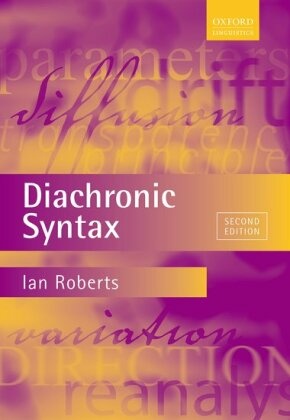| Verlag | Oxford University Press |
| Auflage | 2021 |
| Seiten | 752 |
| Format | 17,0 x 3,8 x 24,7 cm |
| Print PDF | |
| Gewicht | 1276 g |
| Artikeltyp | Englisches Buch |
| Reihe | Oxford Textbooks in Linguistics |
| EAN | 9780198861461 |
| Bestell-Nr | 19886146EA |
This second edition of Diachronic Syntax has been fully revised and updated throughout to cover the multiple developments in the area in the last decade. Written by one of the leading scholars in the field and including a glossary and suggestions for further reading, it will be an ideal textbook for undergraduate students of historical linguistics.
This second edition of Ian Roberts's highly successful textbook on diachronic syntax has been fully revised and updated throughout to take account of the multiple developments in the field in the last decade. The book provides a detailed account of how standard questions in historical linguistics - including word order change, grammaticalization, and reanalysis - can be explored in terms of current minimalist theory and Universal Grammar. This new edition offers expanded coverage of a range of topics, including null subjects, the Final-over-Final Condition, the diachrony of wh-movement, the Tolerance Principle, and creoles and creolization, and explores further advances in the theory of parametric variation. Each chapter includes suggestions for further reading, and the book concludes with a comprehensive glossary of key terms. Written by one of the leading scholars in the field, the volume will remain an ideal textbook for students of historical linguistics and a valuable referen ce for researchers and students in related areas such as syntax, comparative linguistics, language contact, and language acquisition.
Inhaltsverzeichnis:
Introduction
1: Formal comparative and historical syntax
2: Types of syntactic change?
3: Acquisition, learnability, and syntactic change
4: The dynamics of syntactic change
5: Contact, creoles, and change
Epilogue
Glossary
References
Index
Rezension:
Review from previous edition 'This work gathers together a wealth of research linking language change to a number of other linguistic areas, and as such is ambitious in its scope. It is a welcome addition to the body of literature on language change.' Johanna L. Wood, Folia Linguistica

